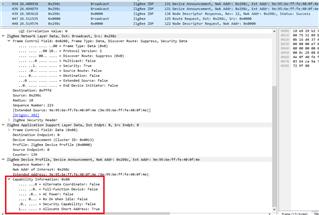Other Parts Discussed in Thread: SYSCONFIG, Z-STACK
Good morning,
I'm working on a Zigbee network using CC2657R7 as coordinator, on custom board,
Coordinator software is on "znp_LP_CC2657R7_tirtos_ccs" project example, from "simplelink_cc13xx_cc26xx_sdk_6_20_00_29" SDK.
This coordinator works well with multiple End Devices I have tested so far.
However there is one problem with the only one End Device in my network working on battery. This device does not enter in sleep mode as it should, the radio stay powered on and responding.
It seems to wait something from coordinator. I can tell because it goes to sleep when it is not connected.
My question are:
Is there any configuration in zStack I should enable/disable to support End Devices sleep mode?
I'm pretty new in zigBee so I'm wondering how is it supposed to work. Is there a message signaling the end of communication or End Device decides alone to go to sleep?
Thanks,
Sylvain SERRE




